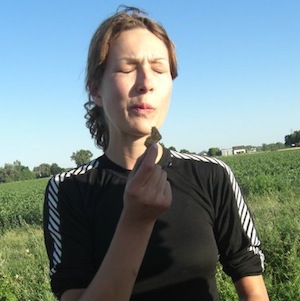A human foetus can do it, as can a newt, even a starfish has got it nailed; yet when it comes to you and I, regeneration is a struggle. That is not to say we can’t repair ourselves, we do so but the end result – a scar – can have a profound effect on the physical and psychological aspects of sufferer.
Fiona Wood strives to change this. World renowned for her work with burns victims, she graced the recent NOI conference with her seminal ideas on tissue healing that were far from skin deep, enticingly asking: ‘can we think ourselves whole?’
Following her fantastic delivery, I thought, ‘wow’:
- Skin, you are rad
- Brain, you are happening
And ‘gosh’:
- You two should never be separated
It has become second nature to think about our body as being represented in the brain, indeed, it is a difficult place to leave once you have arrived (a bit like Adelaide really). Yet, paramount to the maintenance of the sensory homunculus is the afferent information that we receive from the body surface: our skin.
Without our skin who would we be? Beyond its function as a peripheral barrier, skin serves to create an interface that dictates our ‘self’ in relation to others. This quality is compromised in the face of burns.
Whilst tackling the key requirements for successful wound healing, recently revolutionising the way in which skin grafts are applied with ‘spray on skin’ (ReCell®), Fiona Wood has postulated that burns management needs to go beyond the surface and address the scar that is not visible to the naked eye.
Research has demonstrated that not only are there sensory function and neuroanatomical changes at the site of tissue scaring, there are changes present at uninjured areas peripheral to the wound (Anderson et al, 2010; Hamed et al, 2011). It is therefore suggested that beyond the superficial wound lies a broader, systemic response to burns injury that intertwines the periphery and central components of the body-subject (Merleau-Ponty, 1962). This is a concept that is not unfamiliar, certainly a chronic pain picture, with its high prevalence following burns, is an appropriate adjunct here. In this light it seems plausible that plastic changes occur within the CNS following burns injury, moulding the 3D representation we hold of our ‘self’. Like in chronic pain, could this alter the way we predict and evaluate widespread afferent and efferent signals in the presence of scaring? A concept that could help us further understand the reduced functionality associated with scaring.
In order to promote skin healing, moving away from repair towards regeneration, the relationship between the CNS and the periphery cannot be ignored. Should we therefore be looking to maintain the sensory representation of wounds from the outset? Should we discourage the masking of affected body parts that removes important visual feedback? Indeed, should we be applying techniques commonly associated with chronic pain rehabilitation to acute burns victims?
Again refuting Descartes, the need to inexplicably tie the body with the brain is a point null and void- they are one and the same. Whether addressing pain or the creation of scarless healing, the body-subject seems never to work in isolation and we should therefore treat it accordingly.
Abby Tabor
 Abby has a very posh English accent, and clearly doesn’t like granola bars. What brought Abby out to Oz? Abby first got an inkling for what pain really was after listening to Mick Thacker during her undergraduate degree at King’s College London. It was his inspiration, along with a certain Moseley style Explain Pain experience that led her to the other side of the world to delve deeper into the world of pain.
Abby has a very posh English accent, and clearly doesn’t like granola bars. What brought Abby out to Oz? Abby first got an inkling for what pain really was after listening to Mick Thacker during her undergraduate degree at King’s College London. It was his inspiration, along with a certain Moseley style Explain Pain experience that led her to the other side of the world to delve deeper into the world of pain.
She finally agreed to return to the UK, on one condition, that they would let her come back to the land down under to do part of her PhD. Still in the early days of research she is nurturing a nice little coffee habit and asking a lot about how philosophy can fit into our understanding of pain.
References:
Anderson, J., Zorbas, J., Phillips, J., Harrison, J., Dawson, L., Bolt, S., Rea, S., Klatte, J., Paus, R., Zhu, B., Giles, N., Drummond, P., Wood, F., & Fear, M. (2010). Systemic Decreases in Cutaneous Innervation after Burn Injury Journal of Investigative Dermatology, 130 (7), 1948-1951 DOI: 10.1038/jid.2010.47
Hamed, K., Giles, N., Anderson, J., Phillips, J., Dawson, L., Drummond, P., Wallace, H., Wood, F., Rea, S., & Fear, M. (2011). Changes in cutaneous innervation in patients with chronic pain after burns Burns, 37 (4), 631-637 DOI: 10.1016/j.burns.2010.11.010
Hyakusoku H et al. (2010) Recell. Color Atlas of Burn Reconstructive Surgery. Ch 6
Merleau-Ponty M(1962) Phenomenology of Perception, trans. Smith, London: Routledge and Kegan Paul



